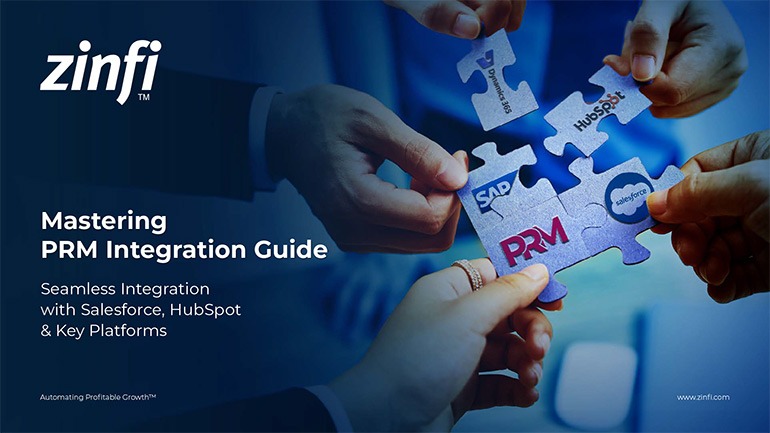Glossary - How to - Partner Portal Optimize
How to Build and Optimize a Partner Portal?
Introduction
A partner portal is a centralized digital platform organizations use to manage relationships with their partners, resellers, and distributors. It provides access to essential tools, resources, and data, ensuring seamless communication and collaboration. A well-structured partner portal enhances partner engagement, improves productivity, and drives business growth.
In Partner Relationship Management (PRM), a partner portal is crucial in automating processes, such as deal registration, training, marketing collaboration, and performance tracking. Effective partner portals integrate with Customer Relationship Management (CRM) systems and other enterprise tools to streamline operations and foster a strong partner ecosystem.
Key Takeaways:
- Define Objectives and Partner Needs: Before developing a partner portal, clearly define its purpose and align it with business objectives. Identify what partners require, such as sales enablement tools, training programs, and marketing assets. Conduct surveys and analyze partner feedback to prioritize essential features.
- Choose the Right Technology and Platform: Selecting the right technology stack is critical for building a scalable and secure partner portal. Consider cloud-based PRM solutions seamlessly integrating existing systems, user-friendly interfaces, and mobile accessibility. Ensure the platform supports Single Sign-On (SSO) and robust security measures to protect sensitive data.
- Provide Comprehensive Partner Onboarding: A smooth onboarding process ensures that partners can quickly use the portal. Include guided tutorials, step-by-step workflows, and automated training programs. Offering a structured onboarding experience improves partner engagement and accelerates productivity.
- Enable Seamless Collaboration and Communication: Partner portals should facilitate effortless collaboration by incorporating messaging tools, discussion forums, and document-sharing features. Integrating marketing automation and co-branding tools allows partners to execute campaigns efficiently. Real-time notifications and updates enhance communication and responsiveness.
- Track Performance with Analytics and Reporting: A robust analytics dashboard helps measure partner success by tracking key performance indicators (KPIs), such as lead conversion rates, sales performance, and training completion rates. Providing partners with detailed insights enables data-driven decision-making and continuous improvement.
Summary of Key Takeaways:
- Clearly define partner portal objectives based on partner needs.
- Select a secure, scalable, and integrative technology platform.
- Implement structured onboarding and training programs.
- Foster seamless communication and collaboration.
- Utilize analytics to track performance and optimize strategies.
Industry-Specific Examples:
- Automotive Manufacturing: Car manufacturers use partner portals to manage relationships with dealerships and service providers. These portals provide real-time inventory updates, marketing resources, and training programs to ensure brand consistency and operational efficiency.
- Consumer Electronics: Electronics brands leverage partner portals to distribute product information, manage warranties, and streamline sales incentives. Authorized resellers can access promotional materials and technical support through the portal.
- Energy Production: Energy companies use partner portals to collaborate with contractors, suppliers, and distributors. These portals help manage compliance documents, safety training, and project timelines.
- Financial Services: Banks and insurance providers implement partner portals to manage affiliate programs, independent agents, and financial advisors. These portals offer commission tracking, compliance tools, and training certifications.
- Food and Beverage: In the food industry, partner portals facilitate order management, compliance tracking, and distributor coordination. These platforms help food brands ensure product quality and timely delivery across multiple distribution channels.
- Healthcare Services: Healthcare organizations use partner portals to coordinate with suppliers, pharmaceutical companies, and healthcare providers. These portals ensure regulatory compliance, manage product catalogs, and streamline medical training programs.
- Information Technology: IT companies use partner portals to manage channel sales, distribute software licenses, and provide technical support. These portals integrate with CRM and help partners track leads and opportunities efficiently.
- Pharmaceutical Development: Pharmaceutical firms use partner portals to collaborate with research institutions, distributors, and regulatory bodies. These portals ensure seamless documentation management and compliance tracking for drug approvals.
- Retail Industry: Retail businesses utilize partner portals to manage supplier relationships, streamline inventory management, and facilitate e-commerce integrations. These platforms support real-time order tracking and promotional campaign management.
- Telecommunications: Telecom companies use partner portals to manage reseller programs, track customer activations, and distribute training materials. These portals integrate with billing systems and CRM solutions to enhance partner engagement.
Conclusion:
A well-structured partner portal is essential for optimizing partner relationships and streamlining business operations. Businesses can create a highly effective partner portal by defining clear objectives, choosing the right technology, providing structured onboarding, fostering collaboration, and leveraging analytics. Industry-specific examples highlight the diverse applications of partner portals across various sectors, emphasizing their role in enhancing operational efficiency and driving business growth.
Implementing a robust Partner Relationship Management (PRM) strategy with an optimized partner portal is crucial for companies seeking to improve partner engagement and achieve long-term success.
Associated Keywords:















